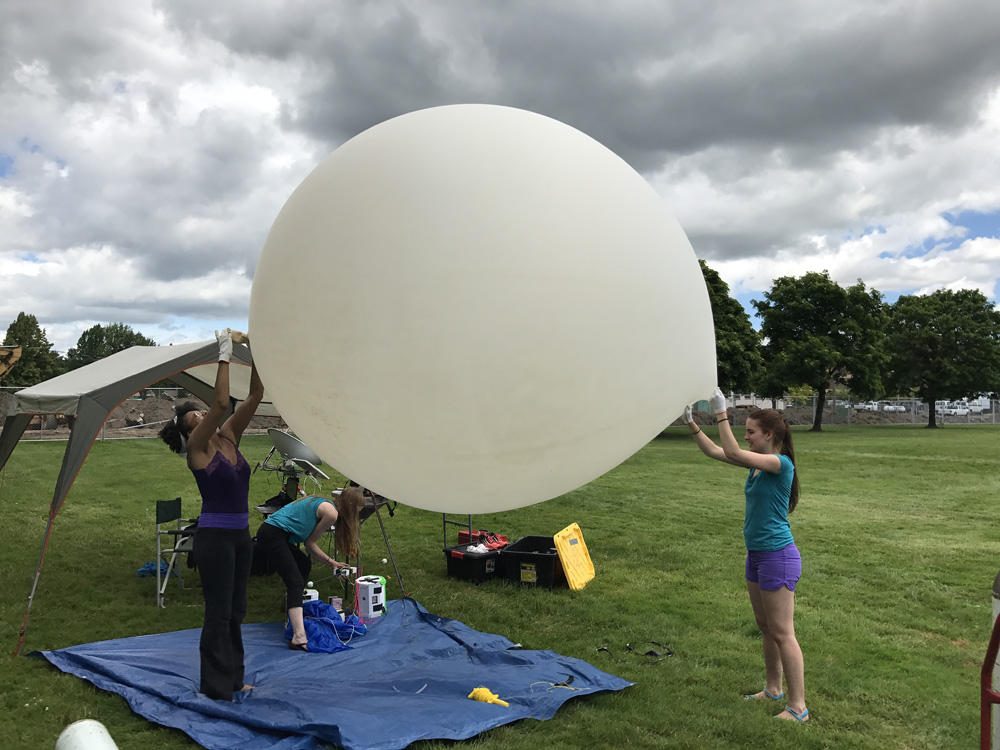Advertisement
Citizen Scientists Join Forces To Document Eclipse
Resume
The total solar eclipse next week might be the most studied disappearance of the sun ever, thanks in part to legions of citizen scientists. NASA, UC Berkeley and other institutions are recruiting volunteers to aid more than half a dozen different science experiments tied to the celestial happening.
In some cases, all you need to join the crowd-sourced observing network is a smartphone. Tom Banse (@TomBanse) of Here & Now contributor Northwest News Network reports from Portland, Oregon.
'A Generational Event'
"This total solar eclipse across the United States is a unique opportunity in modern times, enabling the entire country to be engaged through modern technology and social media," said Carrie Black, a program director at the National Science Foundation's Division of Atmospheric and Geospace Sciences, in a statement. "Images and data from as many as millions of people will be collected and analyzed by scientists for years to come."
"This is a generational event," agreed Madhulika Guhathakurta, NASA lead scientist for the 2017 eclipse. "This is going to be the most documented, the most appreciated, eclipse ever."
The scientific observations will mostly come from along the "path of totality," the 60- to 70-mile wide ribbon where the moon will completely cover the sun. The moon's shadow will produce a partial eclipse across a much wider swath.
Learn More About The Citizen Science Projects
- Eclipse Ballooning Project: Students will launch high altitude balloons from more than 35 locations across the total eclipse path sending live video and images from near space to the NASA website.
- NASA GLOBE Observer: Become an eclipse scientist by downloading the NASA app to make temperature and cloud cover observations during the eclipse.
- The Citizen CATE Experiment: The project aims to capture images of the inner solar corona using a network of more than 60 telescopes operated by citizen scientists, high school groups and universities.
- Eclipse MegaMovie 2017: Thousands of images from volunteer photographers and amateur astronomers will be stitched together to create an expanded and continuous view of the total eclipse as it crosses the U.S.
- Eclipse Soundscapes: A multisensory experience of the eclipse for the visually impaired and others who won’t be able to see the eclipse. The app developers at Harvard/Smithsonian Center for Astrophysics want to crowdsource audio recordings of the August 21 event to capture the soundscape of the eclipse in different places.
- Solar Eclipse 2017: Life Responds: Download an app to report your observations before, during and after the eclipse on how plant and animal life responds.
- EclipseMob: Build your own radio receiver and participate in a crowdsourced effort to study the effect of solar radiation on the ionosphere.
- HamSCI Eclipse Experiment: Amateur radio operators can participate in a study about the impact of solar eclipses on long distance radio signals by sending data and voice transmissions.
This segment aired on August 15, 2017.